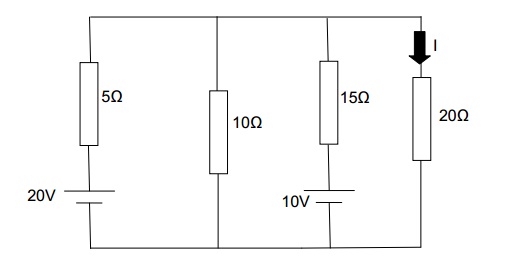I've been trying to solve this using the method the prof. taught us, and I happen to know the answer but I can't reach it no matter how many times I've tried. The circuit in question is below:

I am asked to use Maxwell's circulating current theorem to find out the current at the $20 \Omega$ resistor. My method was to write out all the loop equations:
$20 = 15I_1 + 10I_2$
$10 = 15I_1 + 25I_2 + 15I_3$
$10 = 15I_2 + 35I_3$
then solve by method of elimination. My answers are as follows:
$I_1 = 2.44A$
$I_2 = -1.66A$
$I_3 = -0.43A$
The answer for $I_3$ is $-0.57$.
Am I on the right path? If not, can someone point out where I am going wrong and why? Thanks
